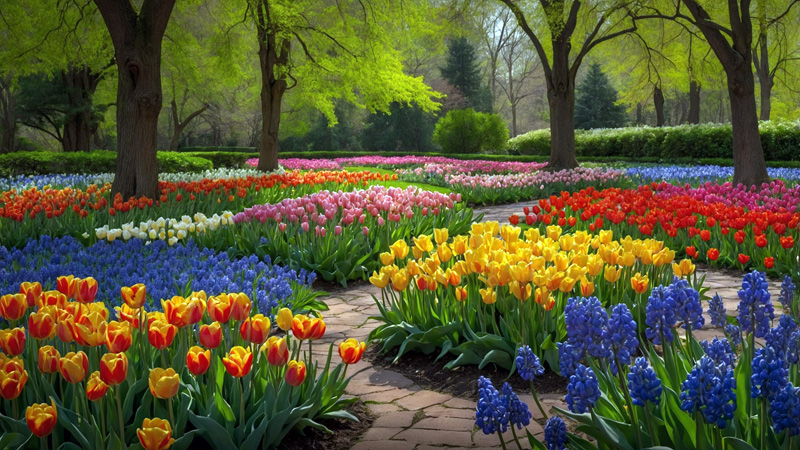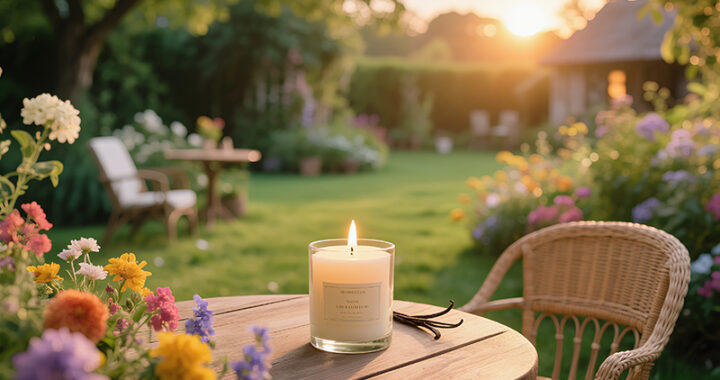How to Create a Butterfly Garden with the Right Plants

Contents
- Preface
- Overview
- 1. Start with the Basics: Location and Sunlight
- 2. Choose the Right Plants for Your Butterfly Garden
- 3. Go Native with Your Plant Choices
- 4. Create Layers in Your Garden
- 5. Avoid Pesticides and Chemicals
- 6. Add a Water Source
- 7. Plant in Clusters
- 8. Provide Shelter and Resting Spots
- 9. Keep It Blooming All Season
- 10. Be Patient and Observe
- Conclusion
Preface
Butterflies are more than just nature’s delicate marvels—they are ecological powerhouses. As primary pollinators, they play a pivotal role in sustaining global biodiversity: studies show they facilitate the reproduction of over 75% of flowering plant species, including 35% of the world’s food crops, from apples to zucchini. Yet, their populations have plummeted by an estimated 30% globally in the past 50 years, driven by habitat fragmentation (as urbanization swallows wild spaces), widespread pesticide use (which disrupts their nervous systems), and climate change (altering migration patterns and plant blooming cycles).
Creating a butterfly garden is a tangible act of conservation. It transforms your backyard into a lifeline, offering food, shelter, and breeding grounds for these creatures. Beyond ecological impact, it’s a front-row seat to nature’s drama: watching a caterpillar morph into a chrysalis, then emerge as a winged beauty. This guide equips you to build a garden that nurtures butterflies at every life stage—turning your outdoor space into a thriving, colorful sanctuary.
Overview
A successful butterfly garden is a symphony of elements designed to support butterflies from egg to adulthood. It’s not merely a collection of pretty flowers but a carefully orchestrated habitat that balances sunlight, shelter, food, and water. Key components include: strategic placement to maximize warmth and protection; a mix of nectar-rich flowers for adult butterflies and host plants for their larvae; native species adapted to local ecosystems; layered vegetation to mimic natural habitats; and chemical-free practices to keep fragile life cycles intact. By integrating these elements, you’ll create a garden that attracts a diverse range of species, requires minimal upkeep, and contributes to broader ecological health.
1. Start with the Basics: Location and Sunlight
Butterflies, as ectothermic (cold-blooded) insects, depend on external heat sources to function—making location and sunlight foundational to their survival.
Key Location Features
- Sunlight: Aim for 6–8 hours of direct sunlight daily. Morning sun is critical: it warms butterflies rapidly after cool nights, kickstarting their metabolism for foraging. In hotter climates (e.g., zones 8–10), partial afternoon shade (2–3 hours) prevents overheating, but ensure morning sun remains unobstructed.
- Wind Protection: Gusts over 10 mph can exhaust butterflies and tear flower petals. Create windbreaks using:
- Existing structures: Fences, walls, or the side of your house.
- Dense plantings: Evergreen shrubs (boxwood, yew) or small trees (crabapple, dogwood) planted in a staggered line.
- Artificial barriers: Burlap screens or trellises covered in climbing vines (clematis, morning glory).
- Water Access: Butterflies “puddle” to absorb water and minerals (sodium, potassium) essential for reproduction. Ideal options:
- A shallow terracotta saucer filled with coarse sand, a sprinkle of sea salt, and enough water to keep the sand damp (not saturated).
- A 2×2-foot patch of bare soil, misted twice daily to maintain moisture—perfect for species like sulphurs and hairstreaks.
- A birdbath lined with flat stones (for perching) and filled to ½ inch deep—avoid deep water, which risks drowning.
Pro Tip:Steer clear of low-lying areas with poor drainage. Standing water after rain breeds mold and mosquitoes, both harmful to plants and butterflies.
2. Choose the Right Plants for Your Butterfly Garden
Butterflies have specialized dietary needs: adults require nectar for energy, while larvae (caterpillars) depend on specific host plants for survival. A balanced garden must include both.
Nectar Plants (Adult Butterflies)
These flowers are engineered for butterfly access: bright hues (to attract from afar) and flat, clustered, or tubular blooms (for easy landing and sipping).
- Lavender (Lavandula): Fragrant purple spikes bloom June–August. Thrives in well-drained soil; irresistible to swallowtails, painted ladies, and fritillaries.
- Buddleia (Butterfly Bush): Arching branches with cone-shaped flowers (pink, purple, white) from summer to fall. A top choice for monarchs, red admirals, and viceroys.
- Marigolds (Tagetes): Cheerful yellow/orange blooms May–October. Drought-tolerant; loved by cloudless sulphurs and skipper butterflies.
- Zinnias (Zinnia elegans): Bold, daisy-like flowers in red, pink, or orange. Bloom all summer; a favorite of almost all species, including monarchs and question marks.
- Asters (Symphyotrichum): Purple/blue daisy-like flowers August–October. Critical for migrating monarchs and late-season species like the American lady.
- Salvia (Salvia officinalis): Spiky red or blue flowers spring–summer. Attracts hummingbirds too, but a staple for red admirals and cabbage whites.
Host Plants (Egg-Laying and Caterpillars)
Each butterfly species lays eggs on specific plants, which their caterpillars then devour. Without these, your garden will attract adults but no new generations.
- Milkweed (Asclepias): Monarch caterpillars’ sole food source. Choose region-specific varieties: common milkweed (A. syriaca) for the Northeast, swamp milkweed (A. incarnata) for wetlands, or desert milkweed (A. erosa) for arid zones.
- Nettles (Urtica dioica): Stinging nettles are mandatory for red admiral, comma, and peacock caterpillars. Plant in a corner (wear gloves!)—they thrive in moist, shaded spots.
- Hollyhocks (Alcea rosea): Tall, colorful blooms (pink, yellow) host painted lady caterpillars. Grow against a fence for support.
- Dill/Fennel (Anethum graveolens/Foeniculum vulgare): Parsley-family herbs; black swallowtail caterpillars feast on their leaves. Plant in sunny, well-drained soil.
- Citrus Trees (Citrus spp.): Orange, lemon, or lime trees are host plants for giant swallowtail caterpillars (which mimic bird droppings to avoid predators).
3. Go Native with Your Plant Choices
Native plants are the backbone of a resilient butterfly garden. Co-evolved with local butterflies over millennia, they offer better nutrition, require less care, and support broader ecosystems.
Why Native Plants Excel
- Climate Adaptability: They tolerate local temperature swings, rainfall patterns, and soil types (e.g., native grasses in the Great Plains resist drought).
- Butterfly Recognition: Local species evolved to seek out native plants. For example, California’s pipevine swallowtail only lays eggs on native pipevine (Aristolochia californica).
- Biodiversity Boost: They attract native bees, birds, and beneficial insects (like ladybugs), creating a self-sustaining ecosystem.
Regional Native Plant Examples
- North America:
- Southeast: Purple coneflower (Echinacea purpurea), black-eyed Susan (Rudbeckia hirta), and native azalea (Rhododendron canescens).
- West Coast: California poppy (Eschscholzia californica), yarrow (Achillea millefolium), and Oregon grape (Mahonia aquifolium).
- Europe: Cornflower (Centaurea cyanus), oxeye daisy (Leucanthemum vulgare), and meadow cranesbill (Geranium pratense).
- Asia: Japanese anemone (Anemone hupehensis), Korean mint (Agastache rugosa), and Chinese fringe flower (Loropetalum chinense).
- Africa: African daisy (Osteospermum), red hot poker (Kniphofia uvaria), and bush violet (Barleria obtusa).
Pro Tip: Contact your local native plant society or extension office for a customized list—they’ll know which species thrive in your zip code.
4. Create Layers in Your Garden
Butterflies use plants of all heights: tall plants for perching, mid-sized ones for feeding, and ground covers for shelter. A layered garden mimics their natural habitat (meadows, wood edges) and maximizes space.
Layered Structure
- Tall Plants (6+ feet): Provide perches, windbreaks, and shade for smaller plants.
- Sunflowers (Helianthus annuus): Towering blooms (6–10 feet) in summer. Monarchs and goldfinches (which eat seeds) love them; butterflies use the stems as perches to survey the garden.
- Joe-Pye Weed (Eutrochium purpureum): Pinkish-purple clusters July–September. Thrives in moist soil; a favorite of monarchs and swallowtails.
- Coneflower (Rudbeckia laciniata): Yellow daisy-like flowers on 6-foot stems. Blooms summer to fall; attracts painted ladies.
- Medium Plants (2–5 feet): The workhorses of nectar production.
- Phlox (Phlox paniculata): Clusters of pink/white flowers June–August. Fragrant and drought-tolerant; loved by sulphurs and hairstreaks.
- Bee Balm (Monarda didyma): Red tubular flowers mid-summer. Thrives in moist soil; attracts swallowtails and hummingbirds.
- Black-Eyed Susan (Rudbeckia hirta): Yellow petals with dark centers. Blooms all summer; popular with skippers.
- Ground Cover (Under 1 foot): Protect soil, retain moisture, and offer low-level nectar.
- Thyme (Thymus vulgaris): Low-growing, fragrant, with tiny purple flowers. Blooms spring–summer; visited by skippers and small blues.
- Sedum (Sedum spectabile): Succulent leaves with star-shaped pink flowers August–October. Drought-tolerant; a late-season favorite.
- Clover (Trifolium repens): White/pink flowers spring–fall. Fixes nitrogen in soil; attracts sulphurs and hairstreaks.
Pro Tip: Arrange layers in “waves”: tall plants at the back (if against a fence), medium in the middle, and ground covers at the front. This ensures all plants get sunlight.
5. Avoid Pesticides and Chemicals
Butterflies and caterpillars are highly sensitive to chemicals—even “organic” ones like neem oil can kill them. A chemical-free garden is non-negotiable.
Natural Pest Control Alternatives
- Hand-Picking: Remove aphids (squish or hose off), caterpillars (relocate non-target species to host plants), and beetles (drop into soapy water). Check undersides of leaves—pests love hiding there.
- Companion Planting: Use plants to repel pests:
- Nasturtiums (Tropaeolum majus): Repel aphids and whiteflies; their flowers also attract beneficial insects.
- Chives (Allium schoenoprasum): Deter Japanese beetles and carrot flies.
- Mint (Mentha): Repels ants and mosquitoes (plant in pots to contain spread).
- Beneficial Insects: Release or attract “good bugs” to control pests:
- Ladybugs: Eat aphids (1 ladybug = 50 aphids/day).
- Lacewings: Larvae prey on aphids, mealybugs, and pest caterpillars (but leave butterfly caterpillars alone).
- Parasitic Wasps: Lay eggs in pest caterpillars (like cabbage loopers), controlling their population.
- Diatomaceous Earth (DE): A powder made from fossilized algae. Sprinkle around plants to kill slugs and snails (it cuts their exoskeletons) but won’t harm butterflies.
Pro Tip: Embrace chewed leaves—they’re a sign caterpillars are thriving, which means more butterflies later!
6. Add a Water Source
Butterflies need water and minerals (sodium, potassium) to reproduce—males, in particular, puddle to gather nutrients for mating. A dedicated water spot will keep them in your garden longer.
How to Create a Butterfly Watering Hole:
- Shallow Dish: Use a terra cotta saucer (12 inches wide). Fill with 2 inches of coarse sand, then add water until the sand is damp (not flooded). Stir in a pinch of sea salt or compost to mimic natural mineral deposits. Place it in a sunny spot near nectar plants.
- Mud Puddle Area: Dig a 2×2-foot hole, line it with plastic (to retain moisture), and fill with garden soil mixed with sand. Mist daily to keep it muddy—this mimics the riverbanks or road edges where butterflies naturally puddle.
- Rock Features: Arrange flat stones (flagstone works best) in a sunny area. Mist them twice daily—butterflies will land to drink droplets and absorb warmth from the sun-heated rock.
Pro Tip: Refresh water every 2–3 days to prevent mosquito larvae. In hot weather, add a few ice cubes to keep the water cool without flooding the sand.
7. Plant in Clusters
Butterflies find food by sight—clusters of flowers are easier to spot than single plants. Clustering also saves butterflies energy, letting them feed more efficiently.
Benefits of Clustering
- Visibility: A 3×3-foot patch of lavender is 10x more noticeable than three single plants scattered across the garden. Butterflies (which see ultraviolet light) can spot clusters from 50+ feet away.
- Energy Efficiency: Butterflies burn calories flying—clusters let them feed on multiple flowers without long flights, conserving energy for mating.
- Pollination Boost: Clusters increase cross-pollination, helping plants produce more seeds and fruit.
Clustering Tips
- Group Size: Plant 3–5 of the same species in a tight cluster (1–2 feet apart). For larger gardens, 5–7 plants work better.
- Color Strategy:
- Red/orange clusters (zinnias, marigolds) attract swallowtails and sulphurs.
- Purple/blue clusters (lavender, asters) draw monarchs and red admirals.
- Yellow clusters (black-eyed Susans) appeal to skippers.
- Seasonal Mixing: Combine early and late bloomers in clusters. For example: plant marigolds (summer) with asters (fall) in the same spot for a 6-month nectar supply.
Pro Tip: Leave 1–2 feet between clusters for walking paths—this lets you tend to plants without stepping on them.
8. Provide Shelter and Resting Spots
Butterflies need safe places to rest, hide from predators (birds, spiders), and escape rain or wind. A garden with shelter will keep butterflies longer than one without.
Shelter Options
- Shrubs: Dense, evergreen shrubs are ideal. Try:
- Boxwood (Buxus): Year-round cover; its dense foliage hides caterpillars and offers perching spots for adults.
- Holly (Ilex): Spiny leaves deter birds; female plants produce berries that feed birds (which won’t harm butterflies).
- Privet (Ligustrum): Fast-growing with thick branches; blooms in summer, adding nectar to its shelter value.
- Butterfly Houses: These small wooden structures (12x6x6 inches) have narrow slits (½ inch wide) to keep out birds. Fill the interior with twigs or pine needles (for roosting). Mount them 3–5 feet high on a fence or post in a sunny, sheltered spot (near nectar plants works best).
- Tall Grasses: Provide hiding spots for caterpillars and resting spots for adults.
- Switchgrass (Panicum virgatum): 3–6 feet tall; turns golden in fall. Caterpillars of skippers hide in the leaves.
- Miscanthus (Miscanthus sinensis): Feathery plumes in fall; adults use the stems as perches.
Pro Tip: Leave a small pile of leaves, twigs, or straw in a corner. Some butterflies (like mourning cloaks) overwinter in debris, emerging in spring when temperatures rise.
9. Keep It Blooming All Season
Butterflies are active from spring to fall—your garden needs nectar year-round to support them. A seasonal planting plan ensures no hungry gaps.
Seasonal Planting Guide
- Spring (March–May): Fuel emerging butterflies (like mourning cloaks and spring azures).
- Nectar: Crocuses, daffodils, lilacs, and wild cherry (Prunus serotina).
- Host: Violets (for fritillaries), willow (for mourning cloaks), and dill (for swallowtails).
- Summer (June–August): Peak butterfly season—most species are active, mating, and laying eggs.
- Nectar: Lavender, zinnias, bee balm, and butterfly bush.
- Host: Milkweed (monarchs), nettles (red admirals), and hollyhocks (painted ladies).
- Fall (September–November): Critical for migrating monarchs and late-season species (like the American lady).
- Nectar: Asters, goldenrod, sedum, and late-blooming marigolds.
- Host: Parsley (for late swallowtails) and aster leaves (for some caterpillars).
Pro Tip: Deadhead flowers (snip off spent blooms) to extend flowering. For perennials like coneflowers, cut back ⅓ of the stems in mid-summer—this triggers a second bloom in fall.
10. Be Patient and Observe
Butterflies may take 4–8 weeks to discover your garden—they follow food sources, and word spreads slowly. Observation helps you refine your garden to attract more species.
How to Engage:
- Record Visitors: Use a notebook or app (like iNaturalist) to log which butterflies visit, when, and which plants they prefer. Note colors, patterns, and sizes—this helps identify species later.
- Adjust as Needed:
- If monarchs visit but don’t stay: Add more milkweed (they need it to lay eggs).
- If few butterflies come in fall: Plant more asters or goldenrod.
- If caterpillars are scarce: Check if you’re missing host plants for local species.
- Learn Local Species: Research which butterflies live in your area (the North American Butterfly Association has regional guides). For example, if you’re in Texas, you’ll need pipevine for pipevine swallowtails; in New England, add birch trees for mourning cloaks.
Fun Fact: Monarchs migrate 2,500+ miles from Canada to Mexico—your garden could be a critical fuel stop on their journey!
Conclusion
Building a butterfly garden is a labor of love that rewards both you and the ecosystem. By choosing the right location, planting native nectar and host plants, avoiding chemicals, and designing for diversity, you create a space that supports butterflies at every life stage.
Watching a monarch caterpillar munch on milkweed, then emerge as a butterfly weeks later, is a reminder of nature’s resilience. Your garden isn’t just a pretty spot—it’s a sanctuary that helps reverse butterfly decline, one flower at a time.
Start small: plant a 4×6-foot bed with milkweed, lavender, and marigolds. Add a shallow water dish and wait. Soon, you’ll be greeted by fluttering wings, and know you’re part of something bigger—nurturing life, one butterfly garden at a time.


 Home Decor Ideas to Make Your Home Feel Like a Luxury Hotel
Home Decor Ideas to Make Your Home Feel Like a Luxury Hotel  Best Luxury Accent Lighting for Every Room
Best Luxury Accent Lighting for Every Room  Best Luxury Candles for a Cozy and Elegant Home
Best Luxury Candles for a Cozy and Elegant Home  Best Luxury Bed Frames for a Stylish Bedroom
Best Luxury Bed Frames for a Stylish Bedroom  Best Luxury Bathroom Mirrors for a Stylish Touch
Best Luxury Bathroom Mirrors for a Stylish Touch  Luxury Coastal Home Decor Ideas: Elevate Your Beach House with Timeless Elegance
Luxury Coastal Home Decor Ideas: Elevate Your Beach House with Timeless Elegance